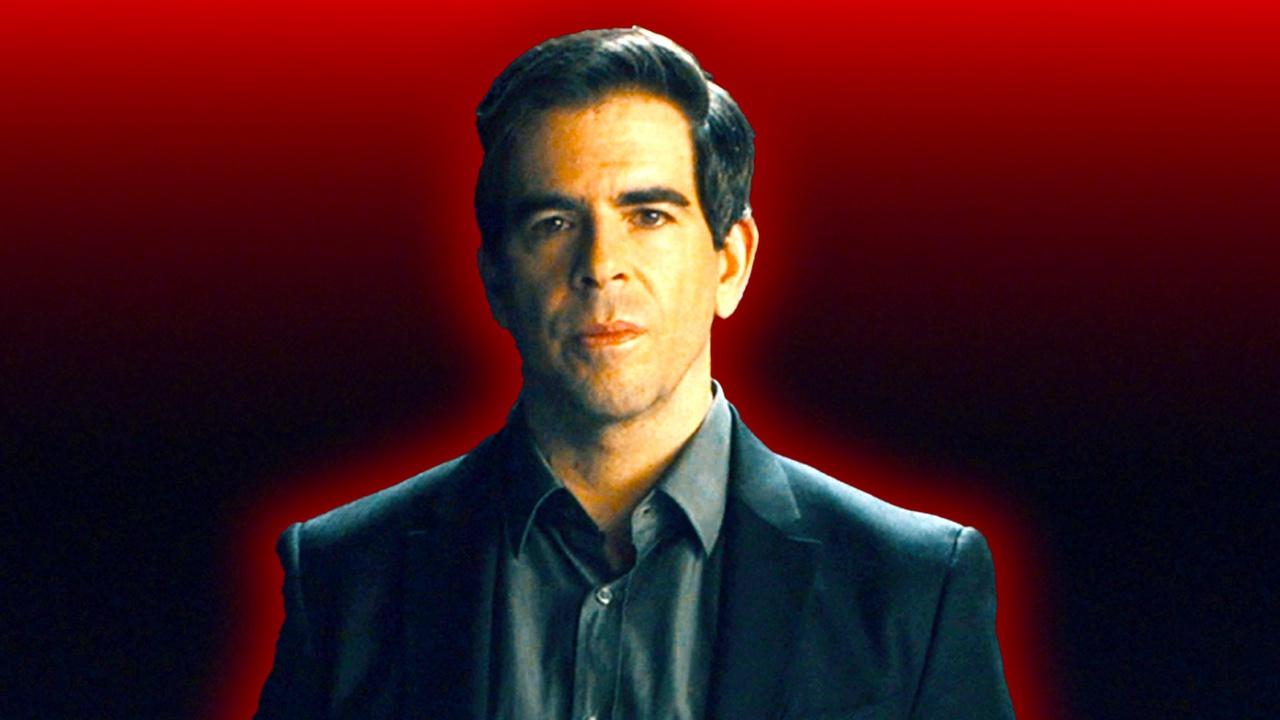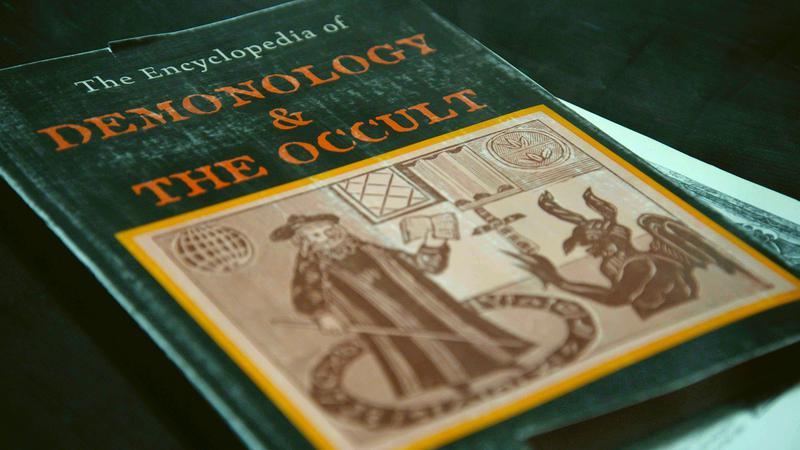
The true crime documentary series Let the Devil In from MGM+ aims to tell the world about the dark and tragic real-life story of Thomas "Tommy" Sullivan, a 14-year-old kid from New Jersey who, in 1988, inexplicably murdered his mother and killed himself after pledging himself to the Devil. His murder-suicide in the name of Satan only helped fuel the fires of the all-consuming Satanic Panic that took over the world in the 1980s and 1990s.
Eli Roth, the director behind the recent Thanksgiving horror movie and an executive producer for Let the Devil In, sat down with The Direct's Russ Milheim to discuss why they decided to use miniatures, scaled-down sets, to tell the dark real-life story in their documentary series.
Roth noted that they "wanted to take you back to that time in 1988," which their minitures helped achieve. After all, those same houses today don't look at all like what they are today, as they've either been "torn down or have been rebuilt."
They "love[d] the tactile feel" of the miniatures, with Roth adding that "there's something very '80s about it."
Another benefit to utilizing the miniatures was that it "really gave [them] a way to show what happened and make it sort of palatable." Given how dark and disturbing the real events are, they needed to ask themselves, "How do you tell that story in a way that it sparks the imagination," while doing it all in "a creative, interesting, and artistic way?"
Let the Devil In premieres on MGM+ on August 31, 2025.
Eli Roth on Using Miniatures for Let the Devil In

"We Wanted to Take You Back to That Time In 1988..."
- The Direct: "One of the unique elements of the series is the use of miniatures. Can you talk about how incorporating those into the narrative that you were putting out to audiences really helped enhance the experience?"
Eli Roth: We wanted to take you back to that time in 1988, and when you go back to those houses today, the houses don't look like that. They [had a] very specific look, and a lot of them are torn down or have been rebuilt. So if we went back to Tommy's Street, it's not going to look like the way it looks.
So, you could use photos, video tape, like all that kind of stuff. But it was our director who came up with the idea of doing miniatures, and found, actually, these women in the Midwest that built [these]—They're like miniature builders. And we thought, I love the tactile feel. There's something very 80s about it... Something that gives it this kind of handcrafted thing.
The movie, 'Hereditary,' has all those beautiful miniatures, and miniatures in horror movies, you know, in scary stories or things like that, can be very effective. So me, I just, when I saw the sets, I was blown away, because they're so beautifully done. But it really gave us a way to show what happened and make it sort of palatable, because it's so—when you describe it, it's so awful, you can't really fully show it, because it's just too disturbing.
So, how do you tell that story in a way that it sparks the imagination and you understand what happened, but do it in a creative, interesting and artistic way? And I thought that those were great. I mean, it really gave you the sense of the neighborhood, the geography. And even though they're miniatures, you get the feel. You go, oh yeah, I can actually, I know what that town is like.
Eli Roth on Why This Was the Story To Tell

This Was the Case That Truly Put Violent Movies and Games Into Question
- The Direct: "When approaching this show, what was the selection process and figuring out what horrible, true story we'd be focusing on, or was it this story that sparked the show as a whole?"
Eli Roth: It was this story that sparked it, and it really—it was Brandon Morgan, who'd done a podcast about this... And it really blew up because he lived there. He grew up there. He was in the same class as Tony Sullivan, who's the kid who brutally murdered his mother, set fire to the house, and took his own life. And there are so many strange things about the case.
And I grew up in Boston, and I remember this happening, and this whole craze of [what] they called Satanic Panic, took over, where it was the first time that horror movies and heavy metal and anything that seemed evil or satanic got put under the microscope. Like, this isn't just entertainment anymore. This is actually evil.
And look at Tommy Sullivan. This kid's an altar boy, never did anything wrong, writes a report on Satan, and within six weeks is pledging his soul to the devil and murdering his mother...
Brandon and I have known each other for a long time, and and Brandon said he wanted to turn his podcast into a TV series, and could I help him? And even though I wasn't in New Jersey at the time, I felt like I was the kid that they looked at like, 'Oh, are you going to be the next murderer?' Because you're the one wearing Iron Maiden. My T-shirts were Iron Maiden and 'Texas Chainsaw Massacre,' just rotated between the two. So, I was very much like what everyone saw as the candidate to be the next person is going to, like murder their parents.
But the story is crazy, and when you look at how he died, it's not clear. It's not just very clear that he killed himself, but this town is still scarred by what happened in January of 1988 and a lot of people who refuse to talk to the podcast, listen to the podcast, and heard how great it was, and they came out, and it's the first time you're speaking about it. Like, Sister Philomena, that, you know, she's the head mother at the Catholic school... She talked on camera, and the stuff she said is just chilling well...
Eli Roth Breaks Down How They Worked With the Real-Life Figures Involved

Talking to People This Time Around Was Easier, But They Still Couldn't Convince Everyone
- The Direct: "You mentioned all the people that you're able to talk with that were there and part of this story. How much pushback did the team get for this show and for trying to convince these various figures to share their story? Or was it just way easier now that the podcast is out?"
Eli Roth: Easier, yeah. The pushback happened during the podcast. The podcast was, Why are you bringing this up? Why do you want to reopen old wounds? The young detective who's there, the first police officer who is the first on the scene. Those people like, we're not talking. We're not talking.
Well, they heard the podcast, and they saw how respectful it was. And everyone's like, 'Well, wait a minute, I actually have more information.' There's a lot that got swept under the rug, a lot that got buried, that came out even after the podcast.
So for the first time, people who you know after—Tommy's best friend growing up, who kind of grew up in his house, people that absolutely refused to speak to the media back in 1988 and have never spoken about it, were like, 'I need to set the record straight, and I want to talk about this.'
So, credit due to Brandon Morgan, he really did a great podcast. And we wanted the show to be as respectful as possible. But it was easier. It was anyone that didn't want to do it, you know, sort of stayed out of the way. But we really, it was a great situation.
- The Direct: "One of those people was Thomas Sullivan Sr., who is a key part of the story overall. But the show even mentions that you guys weren't able to speak with him. Are you able to detail some of the efforts and trying to get a hold of him and trying to get his part of the story for this show?"
Eli Roth: Yeah. I mean, look, obviously it's about his family, and about him indirectly, and what he saw, and literally going through the police transcripts. So I completely—At a certain point, you're not going to push someone who's lost their families in this tragedy. And Tommy's brother, who survived, obviously survived it, but then committed suicide.
So, there's a real darkness that has plagued his family, and I'm sure he just wants nothing to do with it. But we have to tell him that we're not sensationalizing what happened and just making this as entertainment. But we are really talking about this crazy thing that, for me, just became, it was like a turning point in culture, where suddenly violent movies and video games and heavy metal music weren't so innocent anymore. People put the blame on that.
But what were the other causes? What were the things? So, they reached out to him through intermediaries. They found him, and he declined.
And when someone declines, you just, you know, you say [okay]. If it's someone who's like a police officer, or someone who's tangentially associated, or a friend, or someone who's witnessed, you could go, come on, we got these other people. You go back to them.
But whenever it's like the direct relative, I mean, this is like his son we're talking about. It's the most painful thing imaginable that could have happened. So, we [obviously offered] it, but if they don't want to participate, you've got no problem.
The full interview can be viewed below:
Horror fans, make sure to check out The Direct's interview with the filmmakers behind The Strangers: Chapter 2. In it, they get candid about making significant changes to the movie following the reception of the first.












